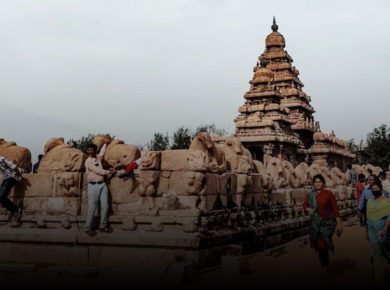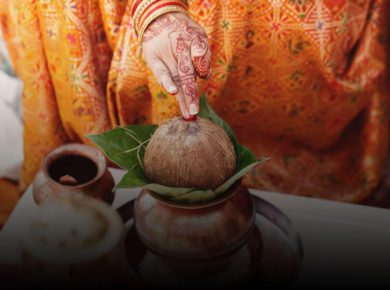Architecture & Culture of India
Culture is defined as a people’s way of life. It also entails how they dress, how they speak, the type of food they eat, the manner in which they worship, and their art among many other things.
Indian Culture is one of the oldest cultures in the world. India had an urban civilization even during the Bronze age. The Indus Valley Civilization (Harappan Civilization) dates back to 3300 BC – 1300 BC. Distinct cultures cultures different from each other co-exist together in a single country. Thus, In India there is unity amidst vast cultural diversity. The way people live in India is reflected its culture.
Culture
- Culture is a way of life → the way an individual and especially a group live, think, feel and organize themselves, celebrate and share life.
- Culture thus refers to a human-made environment which includes all the material and non-material products of group life that are transmitted from one generation to the next.
- In deeper sense it is culture that produces the kind of literature, music, dance, sculpture, architecture and various other art forms as well as the many organizations and structures that make the functioning of the society smooth and well-ordered.
- Culture is the expression of our nature in our modes of living and thinking.
Culture |
|
Material
|
Non-Material
|
| Self-restraint in conduct, consideration for the feelings of others, for the rights of others, are the highest marks of culture. | |
Civilization vs Culture
| Civilization | Culture |
| Making better ways of living Bending nature to fulfill our needs | Refers to the inner being, a refinement of head and heart |
| A poor man wearing cheap cloths may be considered uncivilized | Still he/she may be the most cultured person |
| A wealthy man may be considered as civilized | But he may not be cultured |
|
Civilization is advanced state of culture |
|
Cultural Heritage
- Culture inherited from our predecessors is called our cultural heritage.
- Humanity as a whole has inherited a culture which may be called human heritage.
- A nation also inherits a culture which may be termed as national cultural heritage.
- Culture is liable to change, but our heritage does not.
Architectural creations, material artifacts, intellectual achievements, philosophy, pleasure of knowledge, scientific inventions and discoveries are parts of heritage.
General Characteristics of Culture
- Culture is learned and acquired
- Culture is shared by a group of people
- Culture is cumulative
- Culture changes
- Culture is dynamic
- Culture gives us a range of permissible behaviour patterns
- Culture is diverse
- Culture is ideational
Importance of Culture in Human Life
- Human beings are creators of culture and, at the same time, culture is what makes us human.
- It defines our traditions, beliefs, & way of life → Spiritually & Materialistically
- The three universal values “Truth, Beauty and Goodness” are closely linked with culture.
Culture of India
Culture is derived from Latin term ‘cult or cultus’ meaning cultivating or refining and worship. The term ‘Sanskriti’ has been derived from the root ‘Kri (to do).
| Kri | Prakriti | basic matter or condition | When ‘prakriti’ is refined it becomes ‘Sanskriti’ and when broken or damaged it becomes ‘vikriti’ |
| Sanskriti | refined matter or condition | ||
| vikriti | modified/ decayed matter or condition |
Characteristics of Indian Culture
- A synthesis of various cultures came about through the ages to give shape to what is recognized as Indian culture today.
- Spirituality and value based lifestyle is the core of Indian culture but it has a scientific temperament too.
- Unity in diversity is one of the major characteristics of Indian culture which makes it unique.
Indian Architecture
Architecture
- Not a modern phenomenon → Since early Palaeolithic times
- Rise & fall of different empires influenced the growth & evolution of Indian architecture
Architecture vs Sculpture
Architectur
|
Sculpture
|
Classification of Indian Architecture
Ancient India
|
Medieval India
|
Modern India
|











8 comments
The sources from where we can prepare Indian culture.
1. NCERT History books of Class VI, VII, VIII, XI and XII.
2. Indian Culture by SPECTRUM
3. Indian culture and Heritage – NIOS
4. Indian year book – Chapter on Ministry of culture
5. Ministry of Culture official website
6. Releases by Ministry of culture in Press Information Bureau
7. News and Articles appear in the Hindu Newspaper regarding culture.
you people are truly great how you have updated this site is trmendous ….it is an exceptional work…………..thanks …
Thanks Hitesh
I`m astonished by seeing such a immense support provided by this website . Thank you so much . Is it sufficient to cover from here only or do i need to approach Nitin Singhania or other sources too
,please if anyone can respond, it would be a great help.
To Kalpana
Read Both
I recommend Facets of Indian Culture by Spectrum
The main cultural aspects of India are well covered in simple language and in a precise manner.
It is well researched and will enhance the knowledge of anyone interested in culture of India.
This book is very useful for the civil services Main exam but it is a good investment for both prelims and mains together.
Coverage of Art and Architecture is very good. There is hardly any aspect missing.
The chapters on Dance and Drama are very systematically presented and give all the relevant details.
The chapter on religion and philosophy is good but it could have more details on philosophy.
The chapter on language and literature is detailed but the history of Indian languages and the works produced in them is very interesting and informative.
It is possible that illustrations could have enhanced the visual impact of the book, but the details given are quite adequate.
A criticism is that it is not given in ‘points form’. The purpose of the book is not providing easy-to-memorise notes but to provide the reader with well written content from which he or she can make their own notes.
Great work. God bless 🙂
Thank You Powlu